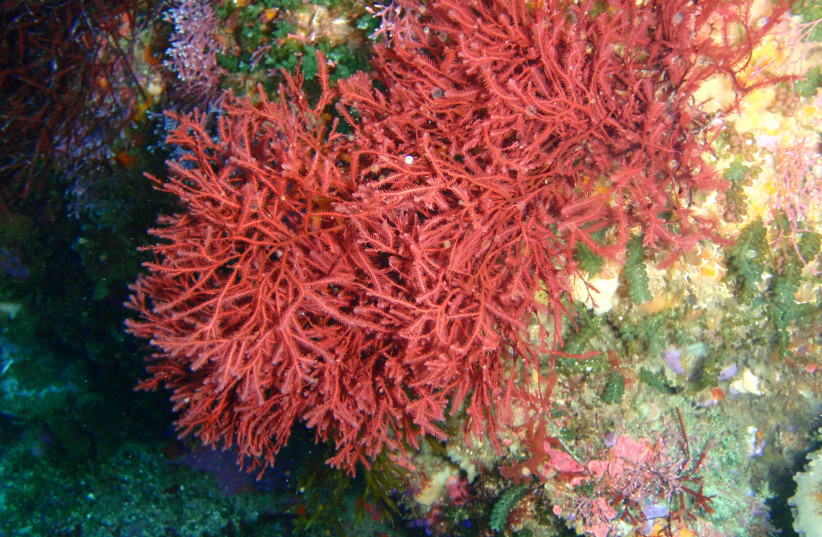As antibiotic-resistant bacteria become a growing threat and traditional sources of anti-microbial treatments become less effective, scientists around the world have been looking farther afield for promising compounds to treat wounds and infections.
Now, researchers at Ben-Gurion University of the Negev (BGU) in Beersheba have connected a metal and a polysaccharide and discovered the new compound worked well against bacteria and common fungus (Candida albicans). This works because of the longer and denser spikes on its surface that poked holes in the membrane and killed off the bacteria and the fungus.
Prof. Shoshana (Mails) Arad and Prof. Ariel Kushmaro, Prof. Levi Gheber and doctoral student Nofar Yehuda have just published their findings in the journal Marine Drugs under the title “Complexes of Cu–Polysaccharide of a Marine Red Microalga Produce Spikes with Antimicrobial Activity.”
Why does this compound work?
Polysaccharides are a carbohydrate with linked sugar molecules and long chains of carbohydrate molecules composed of several smaller monosaccharides. These complex bio-macromolecules function as an important source of energy in animal cell and form a structural component of a plant cell. “By adding a metal (Cu), we were able to create an effective new material,” the researchers said. The new compound is derived from the marine red microalga called Porphyridium sp. Commercialization of these new compounds could come sooner rather than later, they predicted.
“In light of the increased resistance to antibiotic and antifungal agents, there is a growing need for the development of new and improved treatments. BGN Technologies, the university’s technology transfer company, holds a patent application ready for licensing in the field," said Galit Mazooz-Perlmuter and Anat Shperberg Avni of BGN.

Polysaccharides are well-known due to their wide range of biological activities in various aspects such as medicine, cosmetics and foodomics, they wrote in the paper.
“However, it is well-understood that their bioactivity is dependent on their structure, which can be enhanced by certain modifications. We have thus assumed that the addition of metals to the sulfated polysaccharide of red microalgae with anion exchange capabilities [anion-exchange chromatography is a process that separates substances based on their charges using an ion-exchange resin containing positively charged groups] will enable synergism between the metal and the polysaccharide and will generate complexes with new functional activities.”
Arad is from the Goldstein-Goren Department of Biotechnology Engineering; Kushmaro is a member of the Goldman-Sonnenfeldt School of Sustainability and Climate Change and the Goldstein-Goren department, while Gheber is a member of the same department as well as at the Ilse Katz Institute for Nanoscale Science and Technology.
The longer spikes (1,000 nm) and greater density were found to be related to the superior inhibition of microbial growth and viability and biofilm formation. When Escherichia coli bacteria were exposed to the copper and polysaccharide complexes, enhanced bioluminescence accumulation was observed, probably due to membrane perforation by the spikes on the surface of the complexes and consequent cytoplasmic leakage. This study thus supports their idea that the spikes protruding from the metal and polysaccharide surfaces are responsible for the antimicrobial and antibiofilm activities of the complexes.
